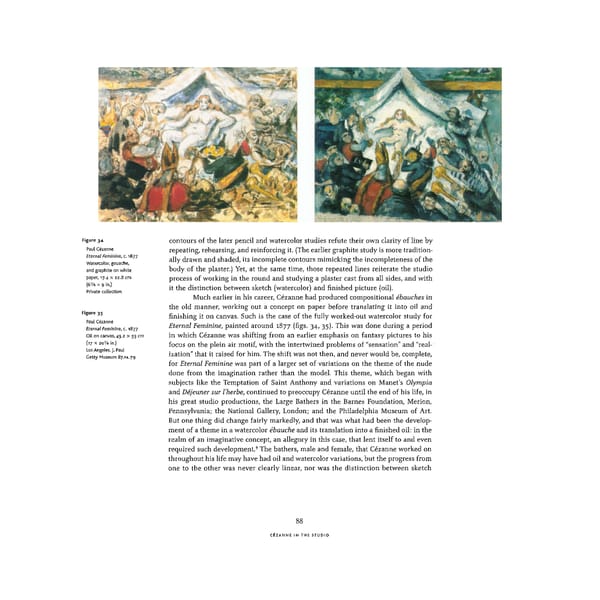Figure 34 contours of the later pencil and watercolor studies refute their own clarity of line by Paul Cézanne repeating, rehearsing, and reinforcing it. (The earlier graphite study is more tradition- Eternal Feminine, c. 1877 ally drawn and shaded, its incomplete contours mimicking the incompleteness of the Watercolor, gouache, body of the plaster.) Yet, at the same time, those repeated lines reiterate the studio and graphite on white paper, 17.4 x 22.8 cm process of working in the round and studying a plaster cast from all sides, and with 7 (6 /s x 9 in.) it the distinction between sketch (watercolor) and finished picture (oil). Private collection Much earlier in his career, Cézanne had produced compositional ébauches in the old manner, working out a concept on paper before translating it into oil and Figure 35 finishing it on canvas. Such is the case of the fully worked-out watercolor study for Paul Cézanne Eternal Feminine, painted around 1877 (figs. 34, 35). This was done during a period Eternal Feminine, c. 1877 Oil on canvas, 43.2 x 53 cm in which Cézanne was shifting from an earlier emphasis on fantasy pictures to his 7 (17 x 20 /s in.) focus on the plein air motif, with the intertwined problems of "sensation" and "real- Los Angeles, J. Paul ization" that it raised for him. The shift was not then, and never would be, complete, Getty Museum 87.PA.79 for Eternal Feminine was part of a larger set of variations on the theme of the nude done from the imagination rather than the model. This theme, which began with subjects like the Temptation of Saint Anthony and variations on Manet's Olympia and Déjeuner sur l'herbe, continued to preoccupy Cézanne until the end of his life, in his great studio productions, the Large Bathers in the Barnes Foundation, Merion, Pennsylvania; the National Gallery, London; and the Philadelphia Museum of Art. But one thing did change fairly markedly, and that was what had been the develop- ment of a theme in a watercolor ébauche and its translation into a finished oil: in the realm of an imaginative concept, an allegory in this case, that lent itself to and even 9 required such development. The bathers, male and female, that Cézanne worked on throughout his life may have had oil and watercolor variations, but the progress from one to the other was never clearly linear, nor was the distinction between sketch 88 CÉZANNE IN THE STUDIO
 Cézanne in the Studio: Still Life in Watercolors Page 102 Page 104
Cézanne in the Studio: Still Life in Watercolors Page 102 Page 104